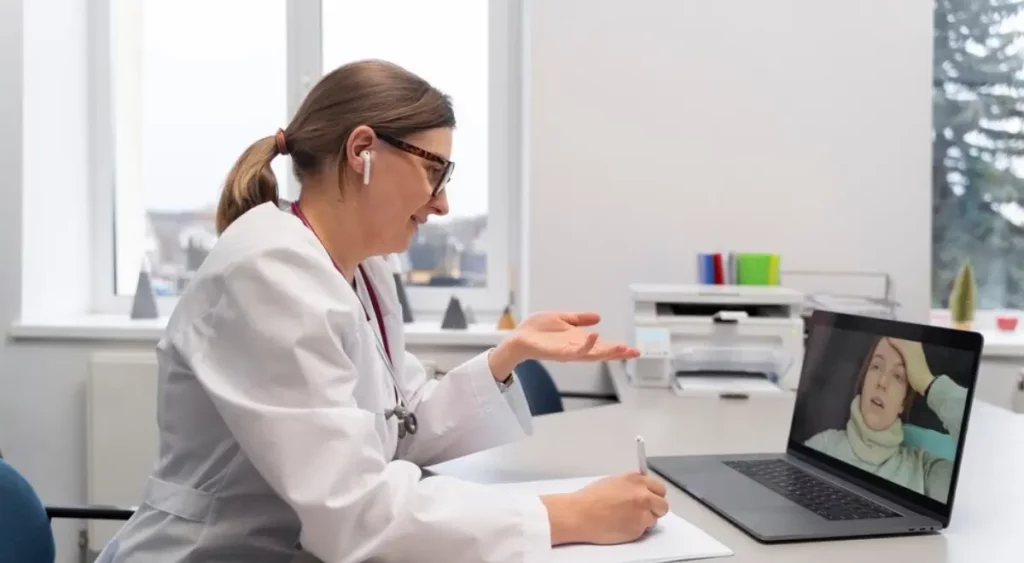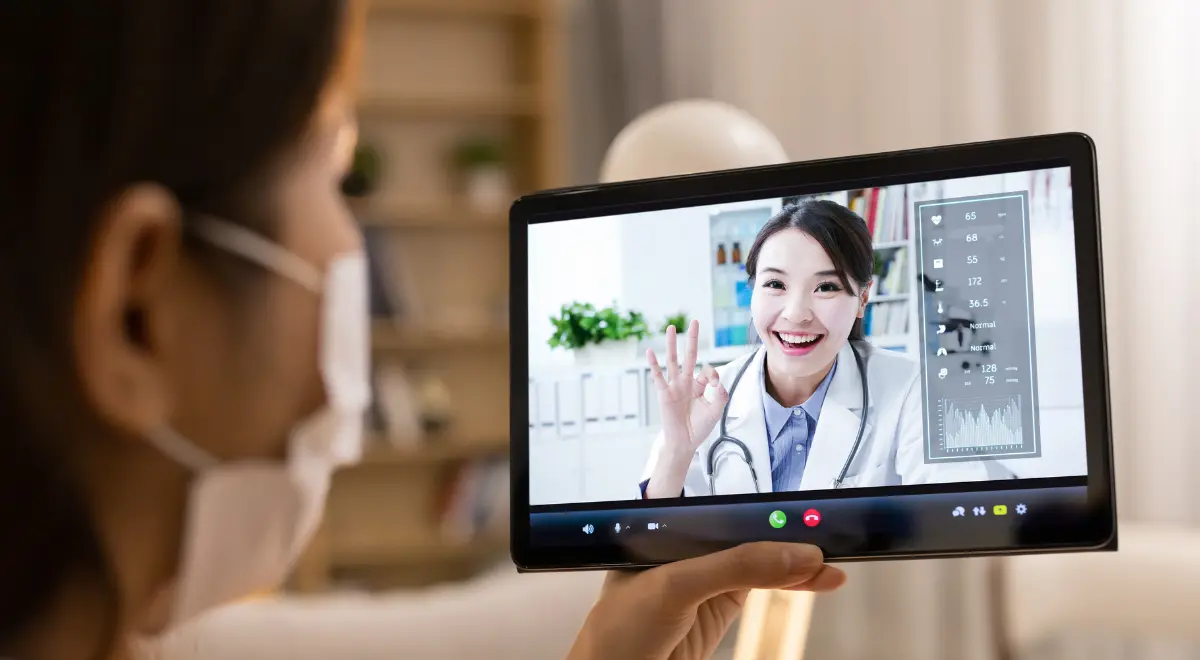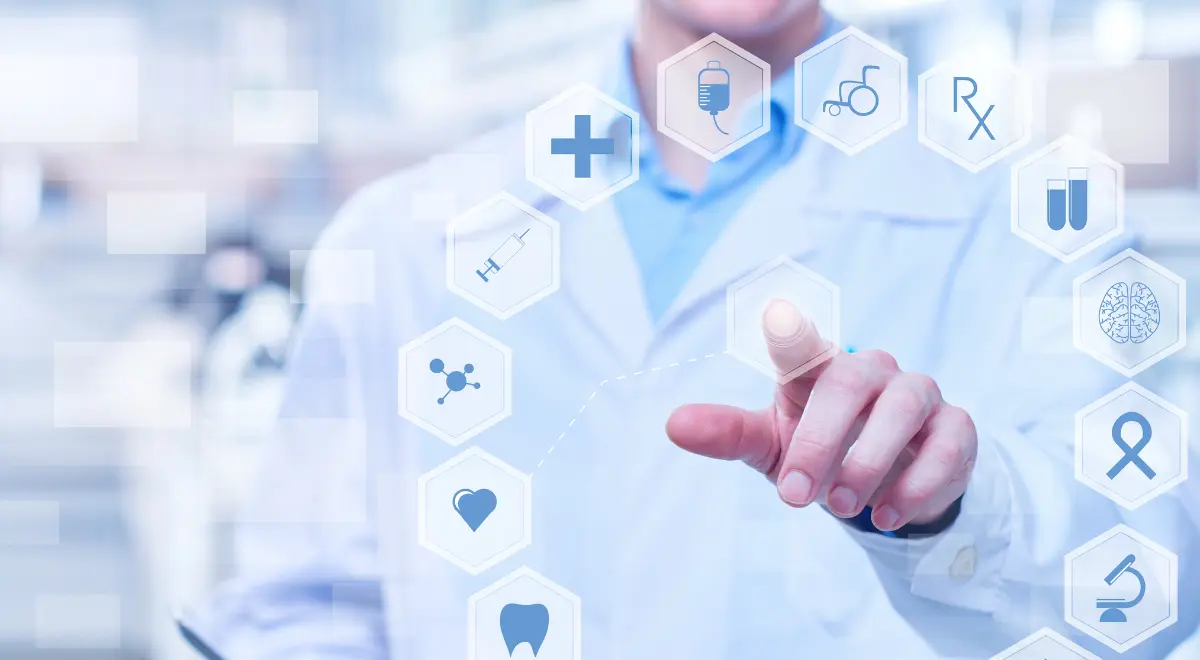The Future of Remote Patient Monitoring in the Healthcare Industry

Remote Patient Monitoring (RPM) is gaining tremendous popularity for consistent and convenient remote healthcare it delivers and promises innovative additions in virtual care. The present as well as future of this remote care service is powered by artificial intelligence and machine learning technology that allows making reliable predictions and analysis.
In future, RPM will expand beyond chronic illness treatments to include post-operative care, mental health monitoring, and preventative wellness programs. Advances in wearable technology will result in more user-friendly devices, while data security measures will assure secure data transport and storage.
Not only this, RPM’s continuous remote monitoring and data-driven insights will enhance patient outcomes, save healthcare costs, and boost overall well-being.
Table of Contents
ToggleCurrent Trends in Remote Patient Monitoring (RPM)
In the US, more physicians are adapting to cellular medical devices to monitor their patients’ health, right from their home, via virtual appointments and limiting the trips to the doctors’ office. The market for remote patient monitoring devices was assessed at $1.45 billion in 2021 and is predicted to reach $4.07 billion by 2030, with an annual growth rate of 8.74%.
RPM has the potential to significantly increase the scope of home healthcare, allocate resources and focus on patients who require frequent monitoring while saving money in the long run.
RPM technology allows caregivers to communicate with the patients whenever needed, especially if they need any emergency medical intervention, thereby bridging the patient-clinician communication gap. This results in reduced hospital or clinic visits.
Implementing RPM To Reducing Healthcare Expenditures
Remote patient monitoring (RPM) plays a critical role in improving patient outcomes, care coordination and reduces expenses in healthcare. It does so by tracking vital signs, symptoms, and medication remotely.
remote patient monitoring software is a popular choice for healthcare providers and patients aiming to achieve optimal health results, with increased independence and real-time health checks from home for chronically ill patients.
A study conducted on RPM shows improved patient outcomes while saving healthcare costs and reduced hospital readmissions by 20% in people with heart failure. Another study found that RPM improved medication and treatment adherence in COPD patients by 20%, thereby leading to better quality of life and cheaper healthcare costs. Not only this, RPM can save healthcare costs of up to $10,000 a year for persons with heart failure and diabetes.
How Does Remote Patient Monitoring Software Work?
Remote patient monitoring (RPM) refers to the continuous monitoring and sharing of a patient’s health information with a clinician who can constantly monitors the patient’s health. RPM systems and technology can be used by healthcare practitioners to collect and assess patient data and make data-driven recommendations.
The following are the steps involved in remote patient monitoring:
- Patient Vitals Data Collection
Activating a patient health monitoring device is the first step in establishing a remote patient monitoring system. Bluetooth-enabled medical devices communicate with the patient’s mobile app, collecting data on heart rate, oxygen levels, and blood pressure. Cellular devices automatically transmit the patients’ reading to the RPM software portal. Sensors and wearable devices communicate health data to healthcare practitioners via remote patient monitoring software. Some of the FDA-approved RPM devices include:
- Electronic Thermometers
- Electrocardiograms (ECGs)
- Cardiac & Continuous Glucose Monitors
- Spirometers
- Electroencephalographs (EEGs)
- Blood Pressure Monitors
- Breathing Frequency Monitors
- Oximeters Audiometers
- Weight Scales
- Health Data Transmission, Evaluation & Alerts
An RPM device collects health data and transfers it to a smartphone app for rapid transmission to healthcare providers. Modern remote patient monitoring software analyze real-time data with more precision, thereby identifying abnormal readings. Advanced technologies such as text messaging, and phone conversations increase data accuracy and efficiency.
Vital health data is compared to a physician’s higher and lower thresholds. The RPM system issues a warning message or alert by SMS, in-app notification, or email, if the vital reading goes beyond the normal level. This data enables physicians to predict uncertain occurrences and outcomes, resulting in making more informed treatment decisions.
- Timely Interventions For Uncertain Patient Health
If a patient’s health data shows that they require immediate medical assistance, the RPM system, nurses, or physicians will activate notifications to inform emergency responders. Physicians can utilize data to make treatment decisions and notify patients via email, phone, or app notifications. They can also provide suggestions on how to avoid future emergency situations or unpredictable health outcomes.
RPM & AI Are A Boon For Healthcare Providers
RPM and Artificial Intelligence (AI) together can revolutionize the trends in the remote healthcare industry. By analyzing patient data in real time, AI can detect problems early on and take action before they worsen. This proactive approach to healthcare can improve patient outcomes while reducing healthcare costs.
- Wearables are becoming increasingly popular
Wearables and sensors play an increasingly important role in RPM, allowing healthcare practitioners to better monitor patients’ vital signs and symptoms. Its ability to enhance patient outcomes and lower healthcare costs will grow as technology progresses.
- Data security and privacy are becoming more important
Healthcare delivery organizations (HDOs) are increasingly relying on telehealth and remote patient management (RPM) to provide convenient and cost-effective care. RPM is becoming increasingly popular due to its ease of use and low cost. Unauthorized individuals can, however, leak sensitive data or disrupt patient monitoring services if sufficient privacy and cybersecurity controls are not in place.
RPM solutions involve a variety of actors, including HDOs, telehealth platform providers, and patients, all of whom manage different technology components of a connected system. Each is responsible for safeguarding it from specific hazards and risks related with RPM technology.
Reducing Rehospitalization with RPM and TCM
Rehospitalization following discharge from inpatient treatment is not a desirable situation for patients or healthcare providers. Hospital readmissions may have a detrimental emotional impact on patients, sometimes leading to feelings of disappointment, frustration, and stress.
Readmission is a financial burden that costs health systems and insurers billions of dollars annually because it forces patients from the least expensive treatment option, i.e. from their homes to back into the most expensive hospitals. Worse yet, hospitals typically do not get reimbursed for treating patients who are readmitted within 30 days.
A growing number of healthcare institutions are using sophisticated Remote Patient Monitoring (RPM) systems to prevent and minimize hospital readmissions.
Remote Patient Monitoring (RPM) in conjunction with Transitional Care Management (TCM) is revolutionizing patient comfort and standard of care for almost all forms of at-home care, including health improvement, in-home care for acute patients, and the transition of care from hospital to home. It also lessens the workload for care teams, controls costs, and significantly lowers hospital readmission rates.
Summary
An increasing number of people are using wearable technology and telehealth services to monitor patients remotely. Since technology enables healthcare providers to establish long-lasting and clinically advanced virtual relationships with patients, remote patient monitoring is incredibly efficient at lowering hospital readmission rates.
HealthArc’s all-in-one Remote Patient Monitoring platform helps practices connect to their patients, optimize reimbursement and minimize documentation with increased clinical efficiency. Our HIPAA compliant software ensures you are adhering to the policies and organized for accurate billing.
Healthcare practices can access staff productivity, billing reports and various other reports along with a seamless integration with all leading EHRs through HL7 and FHIR capabilities. Schedule a free demo today to find out how our digital health platform works or call us today at +201 885 5571 to know how we can help you get the best results for your clinical practice.
Most recent blogs
Categories
- Advanced Primary Care Management
- Behavioral Health Integration
- Cellular Remote Patient Monitoring
- Chronic Care Management
- Chronic Care Management Billing
- Chronic Care Management CPT Codes
- Chronic Care Management Program
- Chronic Care Management Software
- Digital Health Platform
- Principal Care Management
- Principal Care Management CPT Codes
- Remote Care Programs
- Remote Monitoring Devices
- Remote Patient Care
- Remote Patient Monitoring
- Remote Patient Monitoring Billing
- Remote Patient Monitoring CPT Codes
- Remote Patient Monitoring Devices
- Remote Patient Software
- Remote Therapeutic Monitoring
- Remote Therapeutic Monitoring Billing
- Remote Therapeutic Monitoring CPT Codes
- Telemedicine & RPM
- Transitional Care Management
- Transitional Care Management Billing
- Transitional Care Management CPT Codes
Related Posts
- October 21, 2024 | Read Time: 5 mins
Importance of Remote Patient Monitoring (RPM) During Flu Season
- October 4, 2024 | Read Time: 7 mins
Key Remote Patient Monitoring Statistics Every Practice Should Know
- September 21, 2024 | Read Time: 6 mins






